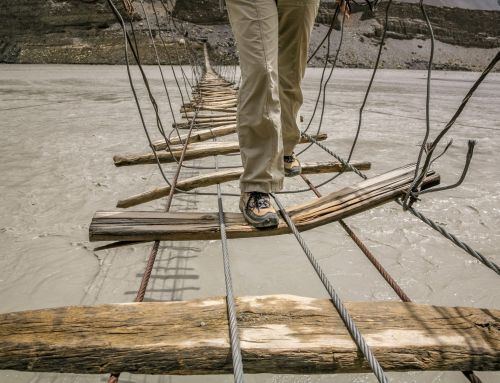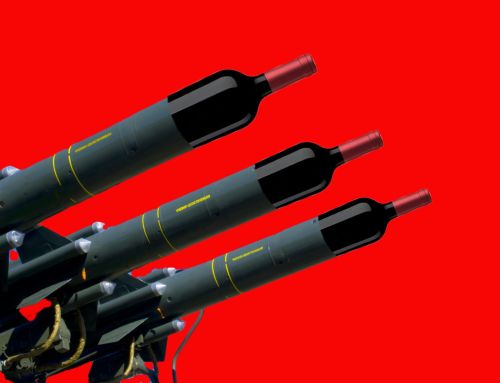Year marked by high heat, low yields, good quality
2021 was an unusual growing season in Washington, marked by a record heat event in late June, an overall hot growing season, and in many cases historically low yields. However, in the end winemakers were quite pleased with the quality of the fruit.
“It’s a strong overall vintage,” says Chris Figgins, president and winemaking director at Figgins Family Wine Estates in Walla Walla Valley. “There’s just not a lot of it.”
The growing season started with below average precipitation during the winter, leading to lower soil moisture. Bud break began March 31st, early but in the range of recent years. This was followed by a series of quite cold nights, with temperatures in the 20s for over a week.
“It was a fingernail biter,” says Marty Clubb, co-owner and managing winemaker at L’Ecole No. 41 in Walla Walla Valley. “I was really surprised there wasn’t more damage.”
Bloom began May 17th in Columbia Valley, slightly ahead of recent years. As bloom continued into June, temperatures warmed up considerably and stayed warm and dry throughout the summer.
“That was really the driving factor for the whole season,” says Dan Nickolaus, vineyard manager at Wallula and Mach One vineyards in Horse Heaven Hills. He notes that the weather at bloom was not ideal.
“About the worst thing that you can have for bloom is hot, dry wind, and we did have some of that.”
It soon became clear that the state was looking at a very light crop. “When the shoots first came through, you could just see. It’s like, ‘Ooh. Small clusters,’” says Figgins.
What happened next, however, was the defining event of the season. A heat dome descended on the Pacific Northwest from June 26th and lasted through June 30th. Growers reported temperatures of 118 degrees Fahrenheit in Walla Walla Valley and 116 in Yakima Valley. Even the traditionally cooler Columbia Gorge was a scorching 108 degrees.
“On our thermal camera, we were seeing temperatures as high as 126 [degrees] on the vineyard floor,” notes Lacey Lybeck, vineyard manager at Sagemoor Farms in the White Bluffs.
This shattered all previous temperature records in every location throughout the state and beyond. Every grower and winemaker said the same thing without hyperbole.
“I’ve never seen triple digits in June like we had,” says Kendall Mix, winemaker at Milbrandt Vineyards and Wahluke Wine Company on the Wahluke Slope.
The good news was the record heat was well forecast. Growers watered liberally in advance. Those with overhead sprinklers used them. Generally speaking, most thought their sites survived the heat well, though some did see curled and scorched leaves depending on location, variety, and vine age.
“Young vineyards on shallow soils really suffered in some places,” notes James Mantone, founder and winemaker at Syncline Winery in the Columbia Gorge.
Once the heat dome lifted, above average temperatures continued. Kennewick saw 13 days above 100 degrees in July.
“That influenced about everything we did, from labor in the field to watering to when we would do anything,” says Yakima Valley and Red Mountain grower Dick Boushey. Many irrigated throughout the growing season, rarely if ever turning drip irrigation off.
“It was a year where I felt like we were just giving and giving to the vines, and they were just happy to take whatever we gave them,” says Lybeck.
As the season continued, just how light the crop was became more and more apparent. “Every time we reassessed crop load, it got lighter and lighter and lighter,” says Clubb.
Veraison started in mid-July in Columbia Valley, fairly well-aligned with recent years. Harvest began in the state August 11th for sparkling wine and August 12th for white wine, with the latter historically early.
The prospect of a light crop, a high heat year, and an early start indicated it might be a fast and furious harvest, with growers racing to pick fruit before sugars got too high. However, that’s largely not how the season played out.
Cooler temperatures started in mid-September and lasted through October, stretching out the season. “We had probably the nicest fall we’ve ever had,” says Boushey. “It went all the way into November, and it allowed us to get this fruit picked.” This took a season that at one point appeared to be barreling down the tracks and slowed it down.
“I’ve always been a believer that you’re finishing weather makes a big difference,” says Clubb. “I think the cooler September/October really helped bring the fruit into balance.”
Still, harvest was not without its challenges, with the pandemic and other factors contributing to labor shortages and trucking shortages. In some cases this impacted what was picked, when it was picked, and how, in what one grower described as a “logistics nightmare.”
“I couldn’t find bodies, and I had to work through a labor contractor, which I haven’t done in a long time,” says Boushey, who notes that once harvest started, it did not relent. “I never picked so steady. It was two months, six days a week, just picking.”
Some wrapped up harvest in late September/early October and others in the middle of the month. Production vineyards, as usual, continued picking into late October/early November.
In the end, the main story was the historically low yields in many locations. Berry size, cluster size, and the number of clusters were all well below average.
At Syncline’s estate vineyard in the Gorge, Mantone says their Gamay grapes were 70 grams in 2021 instead of the typical 190-195 grams. Clubb says in 2015, Washington’s hottest year on record, his winery averaged 3.7 tons per acre across all of its sites. In 2021, the winery’s average was 2.7. Some would have been happy to just have that.
“My worst block, a mature vineyard, I picked Cabernet at .46 [tons per acre],” says Figgins. “We’re always struggling to get a ton, ton and a half [in that block], but .46?”
There are a number of theories as to why the crop was as light as it was. Some believe that a freeze event in late 2020 caused more damage than initially assessed, though others are skeptical. Some think freezing temperatures after bud break played a role. Unsettled weather during bloom in 2020 and 2021 also likely had some impact. All, however, agree that the heat dome was the major driver.
“It was probably the main contributing factor to what I would describe as the lowest yielding vintage I’ve ever seen,” says Clubb. The timing of the heat dome was particularly important.
“That heat hit during lag phase, so that was that period of time when we’ve got cell division,” says Mantone. “I think the vines just kind of like the rest of us went into survival mode.”
Overall, Cabernet Sauvignon was the most impacted variety, with many growers reporting that they were down 30% or more off their projections. In the end, however, most varieties came in light, though Syrah generally fared well.
“Everything was down,” says Katie Nelson, winemaker at Chateau Ste Michelle, the state’s largest winery.
Many reported Brix were elevated, as would be expected in a warm year. Others saw more mixed numbers.
“Brix were kind of a tale of two stories,” says Kate Michaud, winemaker at Double Canyon Winery, which gets the majority of its fruit from Horse Heaven Hills. “We had some sites that had pretty modest Brix, even in the first week of October, then other ones that were 27+.”
The heat of the year might seem to indicate it would be a low acid vintage. However, many reported that acids were above expected – though by no means high.
“The shocking thing was the acid from the vintage, that it held on,” notes Mantone.
In the end, depending on location, it was either the warmest or second warmest vintage on record looking at Growing Degree Days, a measure of heat accumulation. While the heat dome and warm summer surely had their impacts, winemakers were quite happy with the final results. “Quality is great, but it’s going to be a little shorter in certain varieties,” says Nelson.
Unlike the previous two vintages, where a lot of fruit was left on the vine due to a frost event in 2019 and concerns about potential smoke impact in 2020, growers picked every grape they could find in 2021. “Basically the state was picked out,” says Mix.
In the end, the heat dome and low yields were the big stories of the vintage. While the heat had its impact, several producers noted how fortunate it was that the record heat came in late June and not in July or August.
“Had that heat happened three or four weeks later, I think we would have lost the vintage,” says Figgins.
All quotes from interviews conducted in December 2021 and early January 2022. Photos by Richard Duval.
Harvest pick dates are below. The information in the table is aggregated from personal correspondence with growers and winemakers, as well as information posted on Twitter, Facebook, and Instagram. It is not intended to be comprehensive but rather as a snapshot of what went on around the state. If you wish to send data for your grapes or vineyards in the future (or correct any of the information below), please email me at [email protected].














There was a tremendous amount of smoke in the 2021 vintage, in the west Yakima Valley. The Schneider Springs fire blew smoke straight down the valley nearly every day for five weeks, from August 8 to September 11, creating a nightmare for growers there and for winemakers who source fruit primarily from that area. While it's true that most grapes were picked, it was not because they were not smoke-affected – it was because the volume was desperately needed. Some will be blended and/or treated to remove smoke, while others will reach consumers who enjoy the smoky flavors.